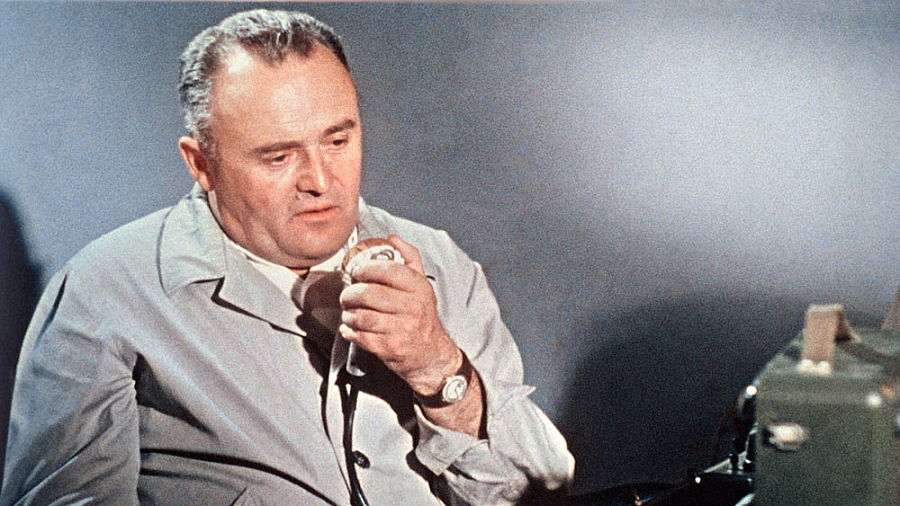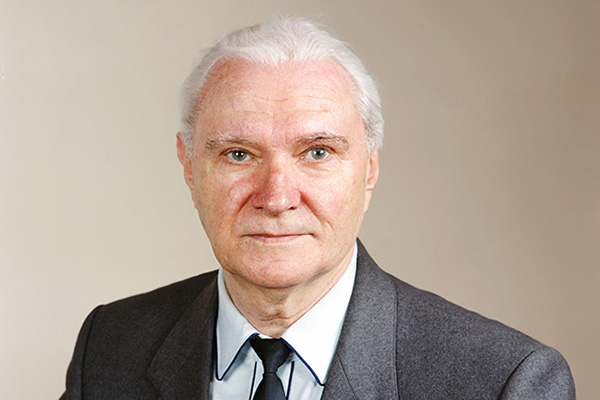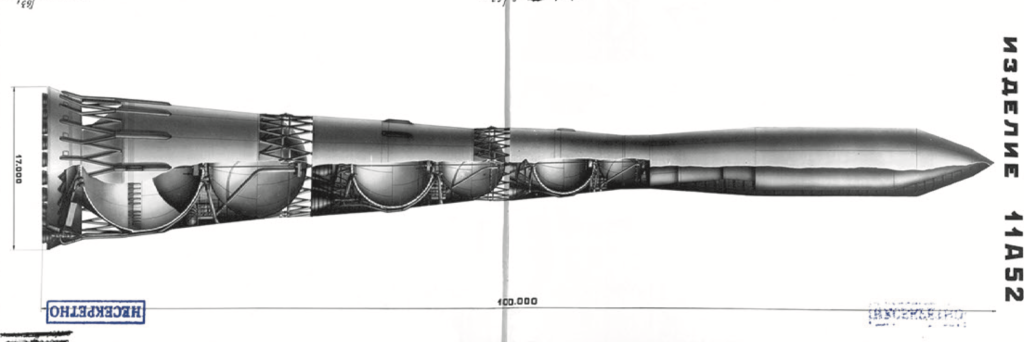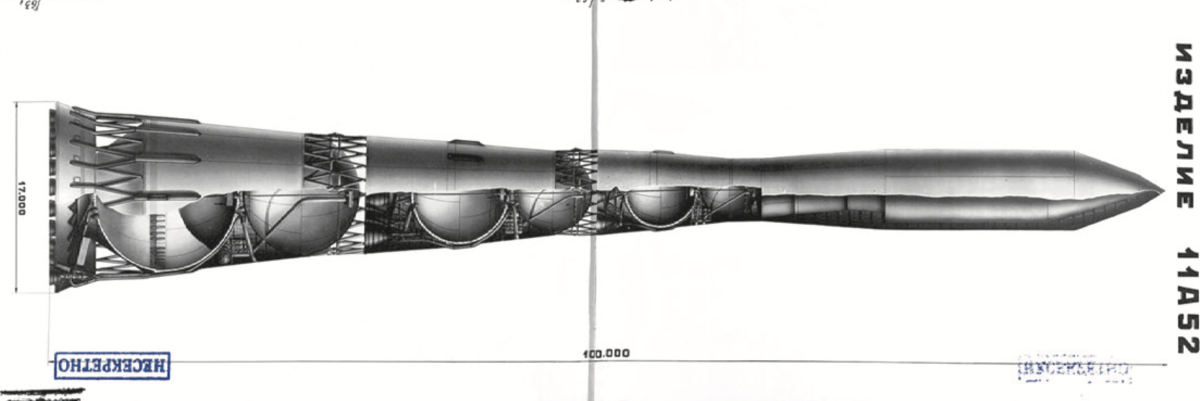Introduction:
At the start of the space race, there were two key figures in the Soviet Union, Valenitin Petrovitch Glushko, the chief rocket engine designer, And Sergei Pavelovich Korolov, the chief designer behind almost all the “firsts” achieved in space by the Soviet Union.

Previously they had got along very well, but then they had a blazing row about propellants for the proposed Soviet Moon Rocket, the N-1. This resulted in Glushko point-blank refusing to work on the N-1, and Korolov being forced to turn to someone who had never designed engines for a space rocket before.

This has widely been held as a key factor in why the Soviet Union did not beat the USA to the Moon, (though personally I think this is overstated).
I recently came across the letter that Glushko sent to Korolev, describing his reasoning, and I thought it would be of interest. The letter as originally published on the “Novosti Kosmonavtiki” forums, and I have used DEEPL computer translation, which I find excellent.
The Letter:
10 November 1961
TO THE CHIEF DESIGNER OF OKB-1 GKOT
to comrade S.P. Korolev.
In accordance with the Decree of the CPSU Central Committee and USSR Council of Ministers of June 23, 1960 and in accordance with the Technical Specifications agreed upon and approved by you (letter of 01.10.60 and letter of 09.09.61), OKB-456 is developing engines for stages I and II of the H-1 heavy launcher. Within the deadline stipulated by the above Resolution (April 1961), the SDO-456 developed and submitted a conceptual design of these engines. Sets of technical documentation for the engines and accessories for their manufacture were developed and released for pilot production. Engine units (combustion chambers, gas generators, pumps, turbines, automation) are in various degrees of readiness for production. Full-scale mock-ups of the engine are ready. Experimental studies have been carried out which solved the problem of reducing the boost of the rocket tanks by installing ejectors at the engine inlet instead of complex and heavy booster pump units. Bench cold and fire testing of the experimental engine units is underway.
The engines of the I and II stages are fully unified, except for the nozzle critical part. At your request, the engines are being developed for a thrust of 150 metric tons near the ground in a single-chamber version.
During the conceptual design phase, the engines were developed in parallel in three variants, differing in the composition of the oxidants used. Dimethylhydrazine (DMG) was envisaged as a propellant, as it is more efficient than hydrocarbons.
As a result of conceptual design for further development of engines, nitric-acid option was rejected as the least efficient, and of the other two options, the preference was given to nitrotetroxide, which has certain advantages over oxygen.
A comparison of the nitrogen-tetroxide (AT) and oxygen (O) versions shows:
1. When using the N-1 on stage I, the weight of the payload to be launched into orbit of the Earth’s satellite will be greater if the AT instead of the O. When using in H-1 on I and II stages “AT” instead of “O”, the weight of the payload is practically equal.
In this case, OKB-456 guarantees specific engine thrust on “AT” for stage I – 285 sec. at the ground, 316 sec. in emptiness and for stage II – 330 sec.
If instead of “AT+DMG” in I and II stage H-1 to use oxygen with paraffin (“O” + T-1), the weight of useful load to be launched into orbit of satellite will be less.
Comparison was done taking into consideration equal capacity and weight of fuel tanks. If to reduce oxygen evaporation the use of screen-vacuum or another type of rocket tanks insulation is meant, it would slightly worsen rocket weight indicators and make the oxygen variant even less effective.
Only for stage III and subsequent stages of the H-1, the oxygen fuel is more energy efficient than the nitrogen-tetroxide fuel.
2. the AT oxidizer maintains liquid state in the temperature range from -11° to +21,5°С, but with supercharging only 1,5 atm it maintains liquid state up to +40°С. When injected into the oxidizer 20% nitrogen monoxide (OKA-50), the liquid state is maintained in the range of -40 ° C to 0 ° C, and at 2.6 atm supercharging tanks in the range of -40 ° to +20 ° C. When switching from AT to OKA-50, specific thrust is increased by 1 unit, and fuel specific gravity is reduced by 1%, i.e. efficiency does not change.
Low boiling point of liquid oxygen (-183°C) complicates its operation, because it requires application of means of oxygen subcooling. Application of such a means is connected with a necessity of additional construction and use of thermally insulated tanks with oxygen subcooling unit near missile H-1 to provide long-term storage of oxygen similarly to the way it is designed for RD-108 operation.
If one stores oxygen directly in the H-1 rocket tanks, then these tanks would have to be made heavier due to the weight of thermal insulation, which would worsen the rocket flight characteristics. In such a case, there is an operational complication, connected with usage of machine facility for oxygen subcooling without any losses for oxidant evaporation.
In both cases, construction and operation of an oxygen subcooling machine and oxygen fabrication plant is required to avoid heavy losses of oxygen during transportation to the point of consumption.
AT or OKA-50 oxidisers can be stored directly in H-1 rocket tanks without using complicating and expensive facilities, which are necessary in case of oxygen.
3. According to SM SM State Committee on Chemistry, the expected selling price of AT in 1962-63 will be in the amount of 55 rubles. 55 rubles, in 1964-65. 40 rubles per ton, and for DMG – in 1962-63. 1,800 rubles, in 1964-65 1,200 rubles per ton (already in 1962-63 and 1964-65). (In 1961 already in 1961 the cost of DMG at the main supplier plant (Combine #16) was 1600 rubles per ton, although this plant did not yet have an order to ensure full utilization of its available capacity). The cost of “OKA-50” and “AT” is almost the same, since both oxidizers are produced on the same equipment by changing the technological mode.
To estimate the costs we take the costs in 1964-65 prices, because since 1964 the start of flight tests of the H-1 booster is expected. The cost of unrefrigerated liquid oxygen at the time of refueling the transportation tank at the supplying plant is 41 rubles per ton.
AT+DMG fuel contains only 27.3% of fuel (K] =2.67) while 0+DMG fuel contains 36.0% of fuel (Ki =1.77). But the cost of the fuel is 30 times the cost of the oxidizer. So AT+DMG fuel (325 rubles per ton) is 1,4 times cheaper than “0”+DMG fuel (458 rubles per ton) even if not taking into consideration expenses connected with maintenance of oxygen subcooling.
If we compare AT+DMG fuel with oxygen-kerosene fuel, which is less effective for the considered application case (I and II stages H-1), then the latter was 8 times cheaper (Ki = 2.54; the cost of paraffin T-1 is 39 rubles per ton), if it was not for the costs of oxygen subcooling.
When estimating the costs of oxygen subcooling to exclude its losses from evaporation, it is necessary to consider not only the cost of spent electric power, as it is sometimes done, but also the cost of making subcooling units, operating at the plant of oxygen producer and at the place of consumption, the cost of their amortization and maintenance, the cost of maintenance of corresponding staff, the cost of making screen-vacuum insulated storage tanks, installed as fuel tanks near the rocket-carrier.
With such an objective estimation of actual cost of a ton of supercooled oxygen, it inevitably turns out to be several times more expensive, and its exploitation becomes more complicated in comparison with exploitation of high-boiling oxidizers.
AT production is essentially at full capacity since AT is an intermediate product in the nitric acid production process.
4. AT+DMG and OKA-50+DMG fuels are self-igniting vapors unlike oxygen fuels and, therefore, do not require ignition devices, automatically ensuring ignition at startup, which significantly simplifies design and operation of the engine and increases its reliability. This is especially important in the case of stages I and II of the H-1, which use a total of 30 engines and the issue of synchronization and failure of their ignition and start-up is very serious.
Presence of spontaneously ignitable fuel components on board does not decrease reliability of a rocket from the point of view of possibility of fire occurrence as for occurrence of combustion focus occurrence a leakiness of both fuel components lines simultaneously is necessary, that is unlikely; on oxygen rockets occurrence of fire on board is possible at leakiness of oxygen line only, in view of volatility of the last, caused by low boiling point, and absence of inert impurities. At the same time, ensuring tightness of connections for liquid oxygen, due to its low temperature, is more difficult than for high-boiling oxidizer. Actually, during flight tests of R-14 and R-16 no fires were recorded due to leakage of manifolds, while during operations with oxygen rockets such cases were registered more than once.
5. Unlike the oxygen propellants, the AT+DMG and OKA+DMG propellants have such a short self-ignition delay that they provide high-altitude start of engines (in vacuum) without application of any additional means and devices, which considerably increases reliability of the propulsion system, especially taking into account that stage II of the H-1 is equipped with six engines to be started simultaneously in a void.
6. The experience of OKB-456 showed that engines using nitric-acid oxidizers containing 27% AT (AK-27) and pure AT have a more stable combustion process and are less prone to high-frequency oscillations than engines using less active, non-self-igniting oxygen fuels.
Therefore, high-powered AT+DMG engines are more reliable in operation and can be fine-tuned at lower costs and in a shorter time than oxygen engines.
The grounds for such a conclusion are the experience gained by OKB-456 in creating engines using high-boiling-point oxidizers for R-12, R-14, R-16, R-26 and R-36, and with oxygen propellants for R-1, R-2, R-5, R-7, R-9 and 63C1.
7. The OKB-456 works experience also shows that for all the engines which used oxygen fuel, cases of spontaneous ignition and explosion of oxygen line units (pumps, automatic control units, evaporators, heat exchangers) caused by rubbing metal surfaces and occasional minor contamination of liquid oxygen environment repeatedly took place. At the same time in the course of long-term work with engines using high-boiling fuels such cases were never observed.
8. As far as corrosion and stability is concerned, AT and OKA-50 oxidizers are incomparably more favourable than AK-27, moreover, they do not require inhibitors and may be stored in common carbon steel or aluminium containers for many years.
9. AT and DMG-based fuels, unlike oxy-kerosene-based ones, are toxic. However, during the entire period of production and operation of AK-27 and DMG, no cases of poisoning have been recorded, provided the operating rules are observed.
10. High performance shielding-vacuum isolation and subcooling units have been developed and have existed in the USA for several years. However, the Atlas and Titan intercontinental missiles, first developed in the USA using oxygen-kerosene fuel, are being urgently converted to AT+DMH with hydrazine (Atlas F and Titan II).
At the same time the intention is to provide the possibility to maintain long-term (years) combat readiness of refueled rockets with launch readiness of 1 minute.
For all second stages of “Thor” and “Atlas” rockets in the USA only nitric acid and nitrotetroxide oxidizers with DMG have been used for several years.
To summarize the above factual material, we obtain for stages I and II of the heavy launcher type N-1
1) The use of oxygen with paraffin energetically gives less effect (less payload is launched into orbit) than with nitrogen tetroxide with DMG, and the use of oxygen with DMG gives no energy advantage.
2) The cost of oxygen with DMG is significantly higher than nitrogen tetroxide with DMG. The cost of oxygen-kerosene fuel is not much less than the cost of nitrogen tetroxide with DMG, considering the costs of manufacturing and operating supercooled oxygen storage tanks and supercooling units.
3) Oxygen fuels are more difficult to operate than nitrogen tetroxide, which does not require a set of facilities to provide subcooling and allows for prolonged storage in fueled rocket tanks without the danger of evaporation and hydraulic shocks.
4) Nitrogen-tetroxide engines are structurally simpler and more reliable than oxygen engines, as they do not require special means for ensuring ignition and high-altitude start-up and are less prone to high-frequency pressure pulsations.
Thus, for the considered specific case of application nitrogen-tetroxide engines allow satisfactory solution of the problem without any loss of power, without a significant difference in cost as compared to the oxygen version of the N-1 stage I and II, but being structurally and operationally simpler and more reliable, easier to refine and can be built in a shorter time than the oxygen engines.
The results of comparing the oxygen fuel with nitrogen-tetroxide fuel make it possible to take an unambiguous decision in favour of AT+DMG fuel for the N-1 I and II stages.
If OKB-1 considers it more appropriate to use OKA-50 instead of AT, this can be accepted.
Having in mind the repeated, direct, personal instructions from Comrade Khrushchev about the responsibility of OKB-456 to develop powerful engines for a carrier heavier than the R-7, and considering the need to speed up the extremely time-consuming work on the design and preparation of series production of these engines, I ask you not to delay the choice of fuel for I and II stages of the N-1 carrier.
Chief Designer OKB-456 GLUSHKO
Arch.no.1354 (253-259)


